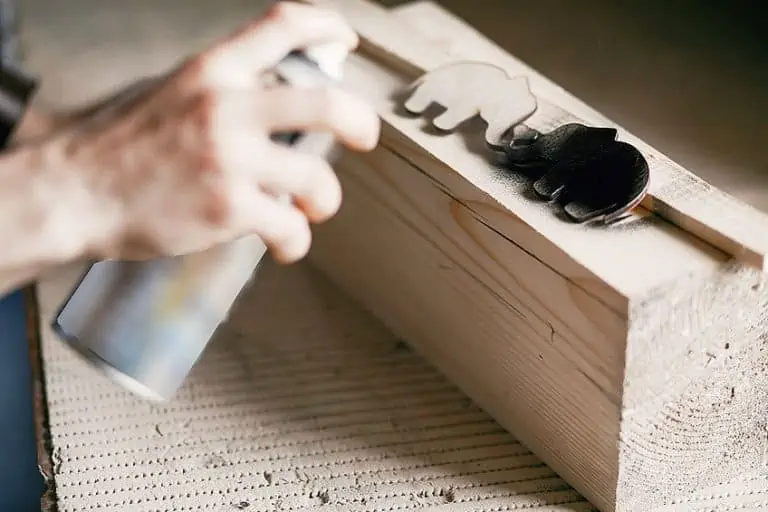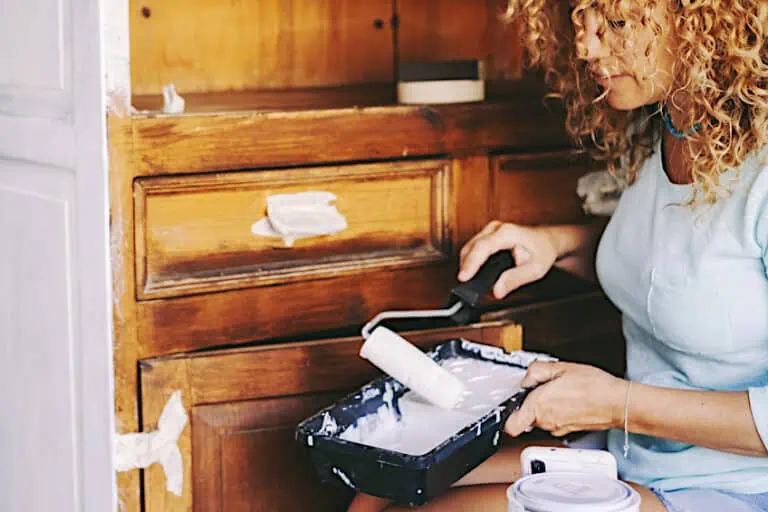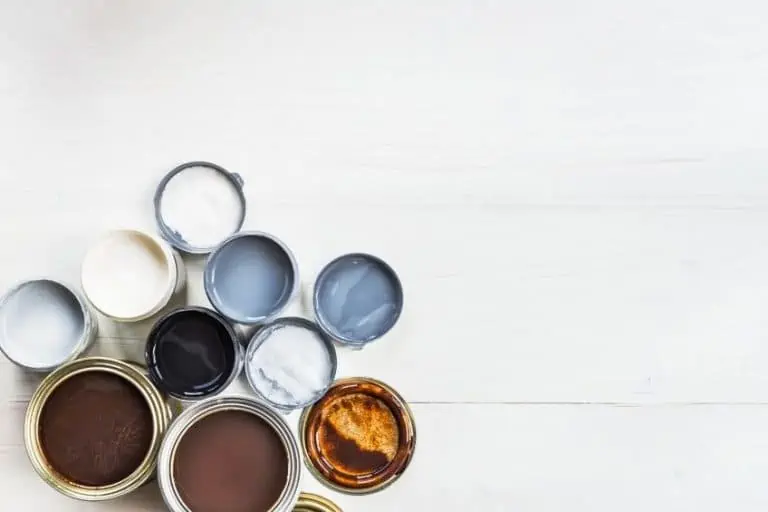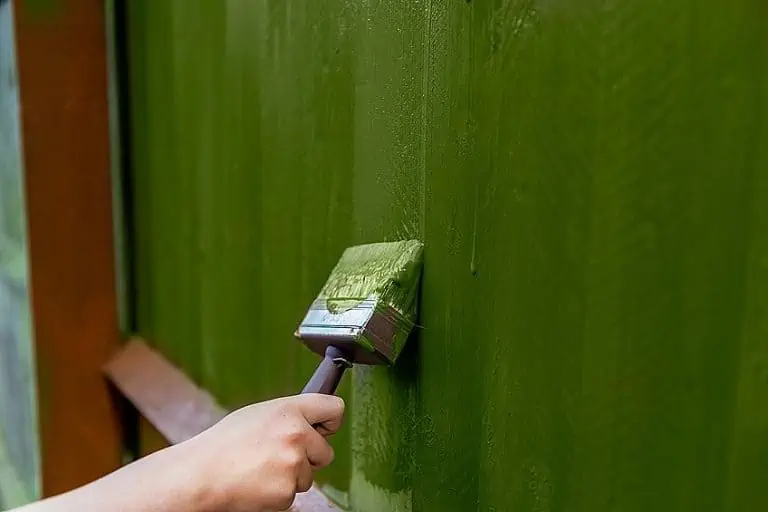How to Stain a Wood Door – Type of Stains for Wooden Doors
Since the invention of homes, there has been a need for privacy. Whether it’s teenagers wanting to blast their music after a bad day, or a parent wanting some peace and quiet, doors have become an indispensable part of the modern home. Even so, most of us tend to take doors for granted, and they can fall into disrepair over time. If you’d like to breathe some life back into your doors, one of the best ways to go about it is to use some wood stain That’s why we thought we’d show you how to stain a wood door, what you’ll need, why it’s a good idea, and what the best way to go about it is.
Table of Contents
Why Should You Stain Doors?
Wood stain has been used for a really long time to both make wooden workpieces look better and protect them from exterior forces. While the paint is a surface coating that essentially sits on top of the door’s wood, wood stain is more of a wood treatment oil. Wood stain works by seeping into the pores of the wood and bonding with its fibers. This allows the stain to protect the wood both internally and externally.
One of the best things about staining wood instead of painting it is that you no longer run the risk of the paint chipping and falling off as a result of impact or abrasion. This means that little bumps and scratches will barely be noticeable, and the surface generally needs less maintenance overall.
There are also some other benefits to staining the surfaces of your wooden doors. For one, certain types of wood stain protect wooden doors from temperature changes, as well as moisture and insect infestation. Wood stain is also really easy to use when compared to paint, and tends to last a bit longer than natural wood oils and even some types of varnish. Wood stain is also far easier to use when compared to paint and similar wood treatments. You don’t even need a brush to apply wood stain if you don’t want to.
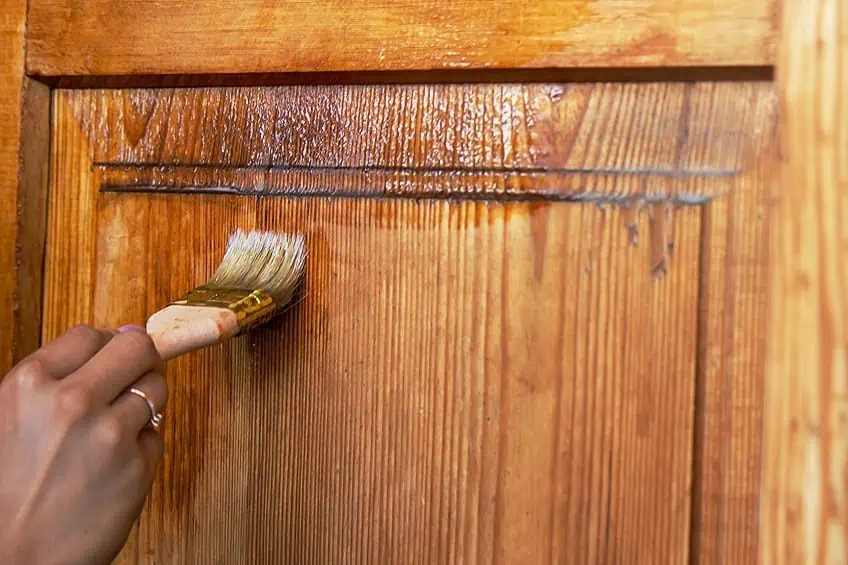
Wood stain also works quickly, and if it ever is damaged, you can quite easily spot and repair any affected areas. As you can see, wood stain has loads of advantages and very few disadvantages to speak of. That being said, that doesn’t mean that there aren’t any disadvantages to using wood stain. For one, wood stain is only really capable of altering the tone of your wood’s colors, either making it lighter or darker.
It also does not alter the texture of the wood and allows the grain pattern of the wood to protrude through. These might not be the look you’re going for, making wood stain less than desirable for you.
How to Stain a Wood Door
Staining a door is pretty easy and doesn’t require a lot of tools. However, to achieve the best finish there are a few steps you should follow. That being said, here are some things you will need as well as some steps you should follow to ensure that the surface of your stained door looks as good as possible.
Keep in mind that you should always wear the appropriate personal protective gear when working with wood stain.
Prepare the Surface of Your Door
Before staining a door, you should ensure that the surface of your door has been prepared correctly. Preparing a wood door is relatively simple, doesn’t require any special tools, and really only requires some elbow grease and concentration. How do you prepare a door for staining? Well, the first thing you should do is remove the door from its hinges, which can usually be done with a Phillips head screwdriver.
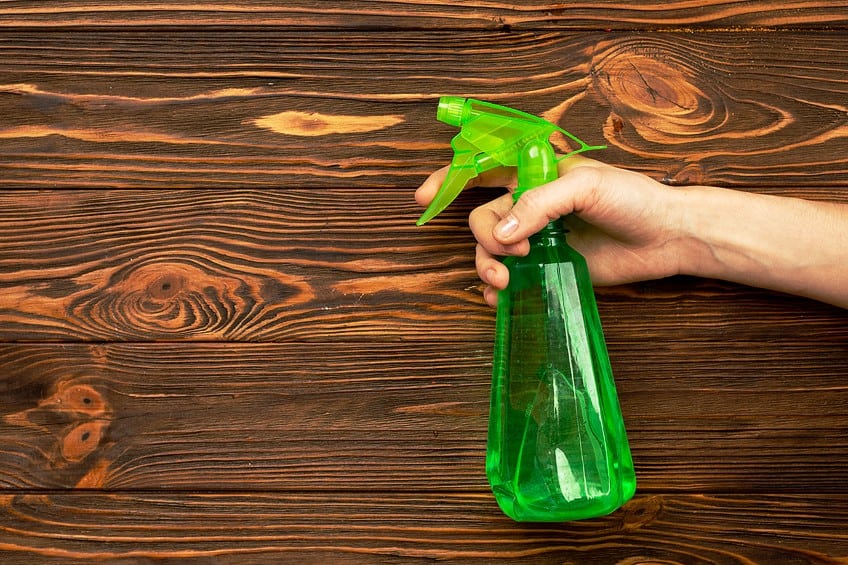
Clean the Door
Next, you should clean the surface of your door. The best way to go about this is to use some simple soap and water. Get some soapy water and a sponge or cloth and give the surfaces of your door a good once over. The goal here is to remove any grime that could impact the sanding and staining process.
Once you’re done, allow the surface of the drawer to dry completely before moving on.
Sand the Door
Once the surface of your door is dry you will need to sand the surface. Why? Sanding exposes fresh wood fibers and ensures that the surface is as flush as possible. Using some sandpaper or a sanding block sand from one end of the door to the other. This can be time-consuming and labor-intensive, so be sure that you sand evenly and take breaks whenever necessary. Once you’re done, remove any sanding dust on the surface of the door using a clean cloth and/or a brush.

Apply Wood Conditioner to the Door
Wood conditioner is a substance that allows the wood to better accept the wood stain once it’s applied. Applying wood conditioner is easy, all that you need to do is get some on a brush and apply it to the surface of your wood door. Apply your conditioner evenly, following the direction of the grain of the wood, and allow it to set in for the manufacturer’s recommended time period.
Once dry, remove any excess conditioner using a clean cloth before moving on to the next step.
Tape off Areas You Won’t Be Staining
Once you’ve conditioned the surface of your door, it’s time to do some final preparations. Your last step would be to use some painter’s tape to conceal any parts of your door you don’t want to stain. Once the tape has been applied, ensure to flatten it by running the edge of a putty knife along the length of the applied tape.
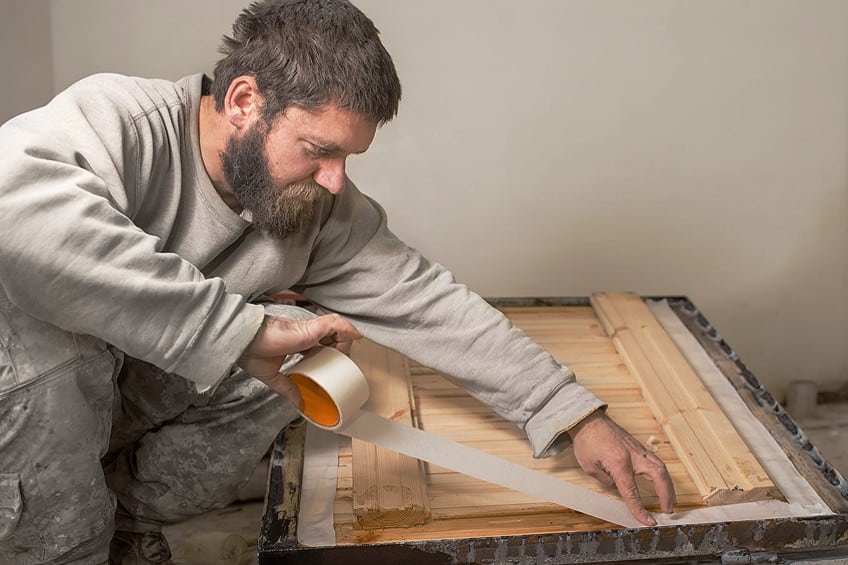
Once you’re done applying your tape, you might want to consider removing your door knob and latch mechanism. This will make it easier to apply your stain as you won’t have to work around it, but this entirely depends on your preference.
Choose the Right Stain Type
While wood stain is essentially just pigment that has been suspended in oil, there are different types of wood stain for you to choose from. As with different types of paint, each type of wood stain has its advantages and disadvantages for you to consider.
That being said, let’s have a look at the different types of wood stains and what they have to offer.
Oil-Based Wood Stain
Oil-based wood stains are the oldest type of wood stain on the market. These stains are available in a wide range of colors for a wide variety of wood species, creating a smooth, sheen finish once applied to a wooden surface. Oil-based stains are widely used as they are highly durable and provide a high-quality finish, but they also contain a lot of VOCs (volatile organic chemicals). Oil-based wood stains consist mainly of petroleum distillates, and either linseed oil or varnish in addition to dye agents. Oil-based stains provide a beautiful finish, but because of the nature of their composition, they can be hazardous. Oil-based stains are flammable, and their fumes can cause discomfort if inhaled when applied indoors.

Water-Based Wood Stain
Water-based wood stains are also a crowd favorite that is widely used across the wood crafting and home improvement industries. Water-based stains provide a muted, sleek finish to the surface of wooden workpieces that appear more like a paint wash than a wood stain. Water-based stains are inherently less durable than oil-based ones, but they’re also devoid of VOCs.
Water-based stains consist of a water-based alkaline solution that has had dye suspended in it. This allows the stain to transfer the dye agent into the wood fibers, changing its color. Water-based stains do not raise the grain of the wood and are a great type of stain for wooden door staining because they can be applied indoors and outdoors.
Gel-Based Wood Stain
Gel-based stains aren’t quite as popular as oil and water-based stains, but they are still quite widely used, especially on certain wood species. Unlike the other wood stains we have mentioned so far, gel-based stains are unique. They provide a sleek, yet muted color tone to wooden surfaces, which is largely due to how they transfer their color.
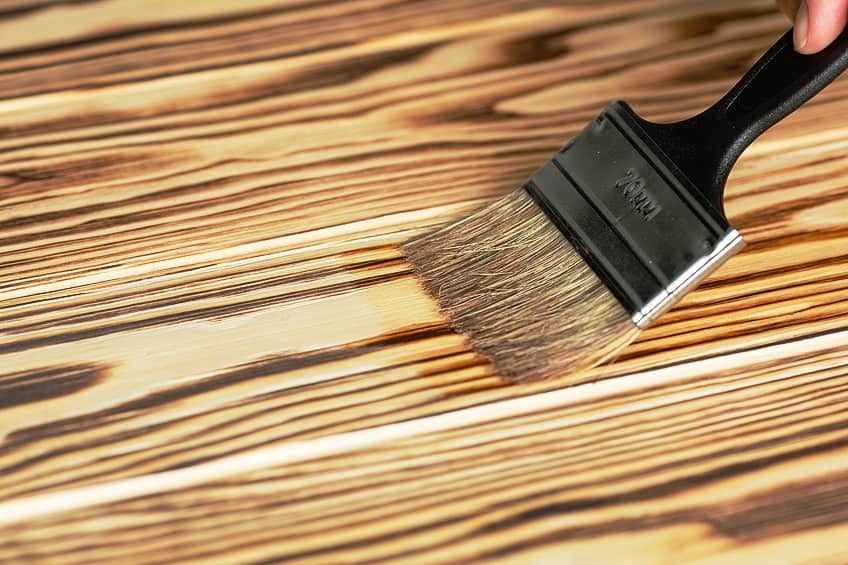
Unlike oil-based and water-based wood stains that absorb the wood’s fibers, gel-based stains sit on top of the wood’s surface and produce a kind of “chemical burn”. Once the stain has done its job, the gel is safely removed from the surface. Gel-based stains consist of oil-based varnish as well as various chemical binders and dyes. Depending on the wood species, using this type of stain for wooden door staining can be extremely effective.
What Is the Best Stain for Wooden Doors?
Objectively speaking, oil-based stains are the best type of stain to use on doors due to the fact that they work well on large wooden surfaces. They provide superior protection, have rich color, do not obscure the grain of the wood, are readily available, have a variety of colors, and can be applied both indoors and outdoors depending on your preference.
Apply Your Wood Stain
Now that you know why it’s a good idea to stain your wooden doors and what types of stains are available to you, it’s time for you to learn how to apply your wood stain. That being said, there are a few ways you can go about applying your wood stain, each with its own pros and cons.
Below you will find three of the best ways to apply wood stain to your doors.
Using a Brush
workpieces. All that you need to do is give your stain a good shake and dip your brush into the container. Start applying the stain to the surface of your wood following the length of your door and the direction of the wood’s grain. Simple enough right? The goal here is to apply the stain as even as possible, so be sure not to get too much stain on your brush or your finish could become blotchy. If your door is large apply the stain in sections and be sure to blend each section with the next as you go along.
The type of brush you choose to use is important, so be sure to use one suited for staining to avoid overapplication and even distribution.
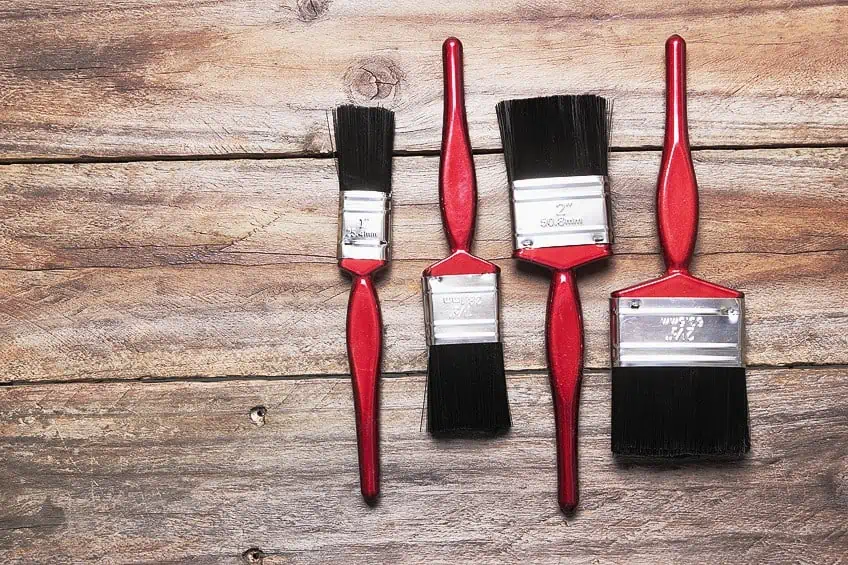
Once you’re done allow the stain to dry for the manufacturer’s recommended time period before sanding and applying any other additional coats. Keep in mind that if your door has intricate designs with recesses, a brush might not be the best choice as they don’t do a very good job of getting into these smaller areas.
Using a Cloth
Using a cloth is the most popular means of applying wood stains to small and medium-sized workpieces. It’s quite easy, but it can be labor intensive considering that you will have to quite literally rub the stain into the surface of your door. Depending on how well your door’s surface has been conditioned this can go quickly, or it can take a while, which is why you should sand thoroughly and use a decent quality wood conditioner.
If you’re wondering how to re-stain a front door for the upcoming season, this is a good method to use.
Applying wood stain using a cloth is simple, give the can of wood stain a good shake and get some on your cloth or pour some out onto the surface of your door. Once it has been applied, your goal is to spread the stain out and rub it into the surface of your door as evenly as possible.

When staining using a cloth, you can start from one end of the board and work your way toward the other, or you can start from the center of the door and work your way out toward the edges (or vice versa). Regardless of your approach, ensure that you work thoroughly and rub the stain in well to ensure that your door has a nice, even stain. Once you’re done allow the stain to dry and cure for the manufacturer’s recommended timer period before sanding and applying any additional coats.
Using a Paint Sprayer
Using a paint sprayer is another great way to stain the surface of your door. If you need to stain multiple doors at once then a paint sprayer might be the best option for you, provided you have the space and skill needed to operate it. Paint sprayers are pretty easy to set up, all you need to do is give your stain a good shake, fill your hopper, and select your nozzle setting. Once you have your sprayer set up, start by spraying slightly off the edge of the working, and then move your wrist in one smooth, uninterrupted motion across the surface of the door, ensuring you apply even trigger pressure throughout the pass.
Stop spraying once you’re slightly off the other end, and repeat this process, essentially spraying in overlapping strips from one end of the board to the other.
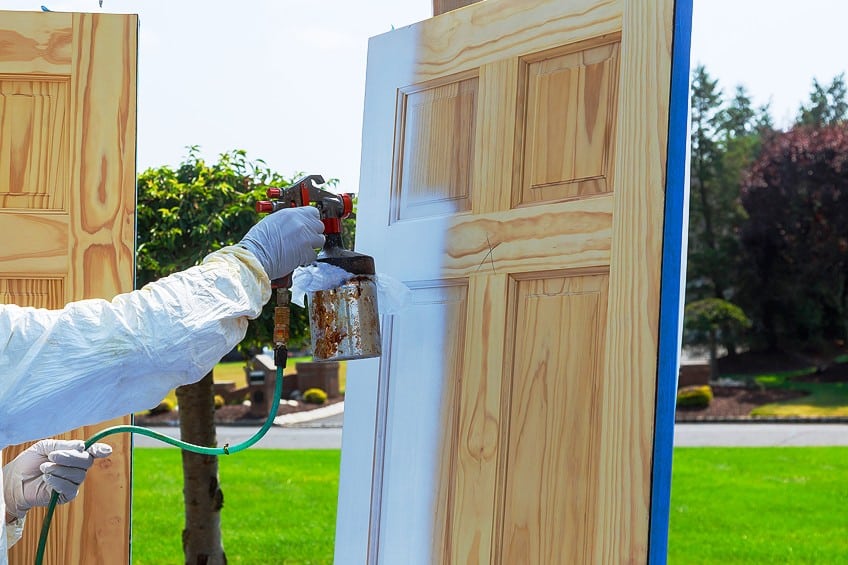
Once the entire board has been coated, allow the wood stain to dry and cure according to the manufacturer’s recommended time period. If you would like to apply additional coats, sand the surface lightly with some fine grit sandpaper, remove any particles with a clean cloth, and apply another coat of stain using the aforementioned technique.
Seal Your Workpiece (Optional but Recommended)
Once the wood stain has been applied to the surface of your workpiece and has been allowed to dry for the manufacturer’s recommended time period it’s a good idea to seal it. Why? Knowing how to re-stain a front door is all well and good but if the surface isn’t protected your stain will just wear down and eventually, you’ll need to re-stain it again.
Sealing your workpiece is easy and can be done with a simple polyurethane or epoxy-based sealer. This is essentially a clear protective layer that protects your wood stain, but the drawback is that it will obscure the texture of the wood. If you like the natural feel of wood grain, this might not be something you’re into, but good to know especially when staining exterior doors.
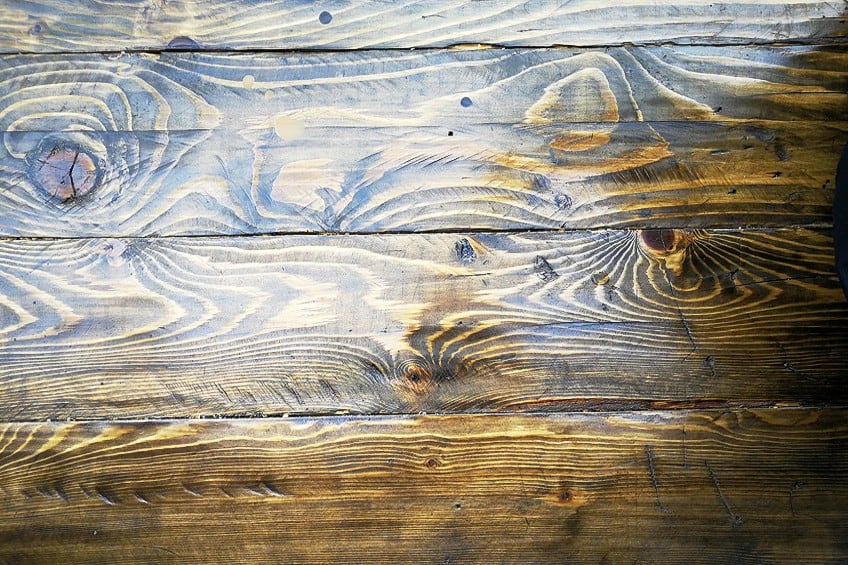
Whether you choose to seal your door or not, once you’re done simply remove the tape painters from the protected areas, reinstall your doorknobs, reattach your hinges, and reinstall your door. If you have used an oil-based stain, ensure that the area your door is situated in is well-ventilated for the next 24 hours while it cures.
Now that you know why it’s a good idea to stain the surface of your doors, how stain works, what types of stains are out there, how to stain your door, and the different ways you can go about it, it’s time for you to get out there and put your newfound knowledge to the test! Remember to always wear the appropriate personal protective gear, and to make sure that your workspace is well-ventilated when working with wood stain.
Frequently Asked Questions
What Is the Best Stain for an Exterior Wood Door?
If you are staining an exterior wood door, the best stain to use is an oil-based stain. This is because oil-based stain is highly durable, provides a lush color, and seeps deep into the fibers of the wood to ensure both internal and external protection for your door.
What Does Wood Stain Do?
Wood stain is essentially a wood treatment oil that darkens the natural color of a wooden surface by seeping into the pores of the wood and bonding with its fibers. Wood stain does not obscure the grain of the wood, and can be used on both interior and exterior wooden surfaces.
Is Wood Stain Better Than Paint?
Paint is a surface coating that obscures the grain of wood, while changing its natural color and texture completely. Wood stain simply darkens the natural color of the wood without obscuring the grain. Paint can chip, crack, and fail to dry, while wood stain has none of these drawbacks.

I have been into woodworking since 2005 and woodturning since 2011. Because of my love for wood and woodworking, I started woodhappen.com to teach other enthusiasts about how to finish and seal wood, the best woodworking tools, the different types of wood, and everything else related to woodworking! Read more about me here.


